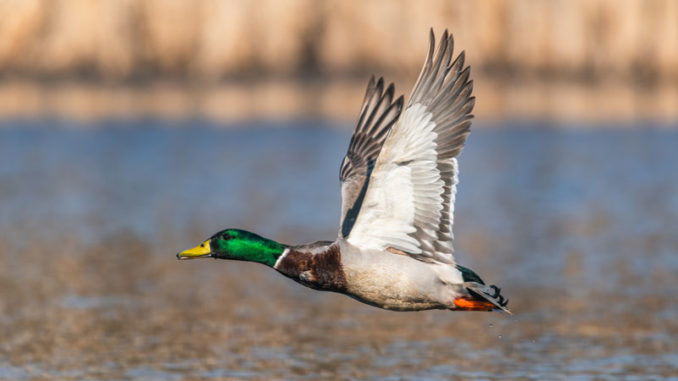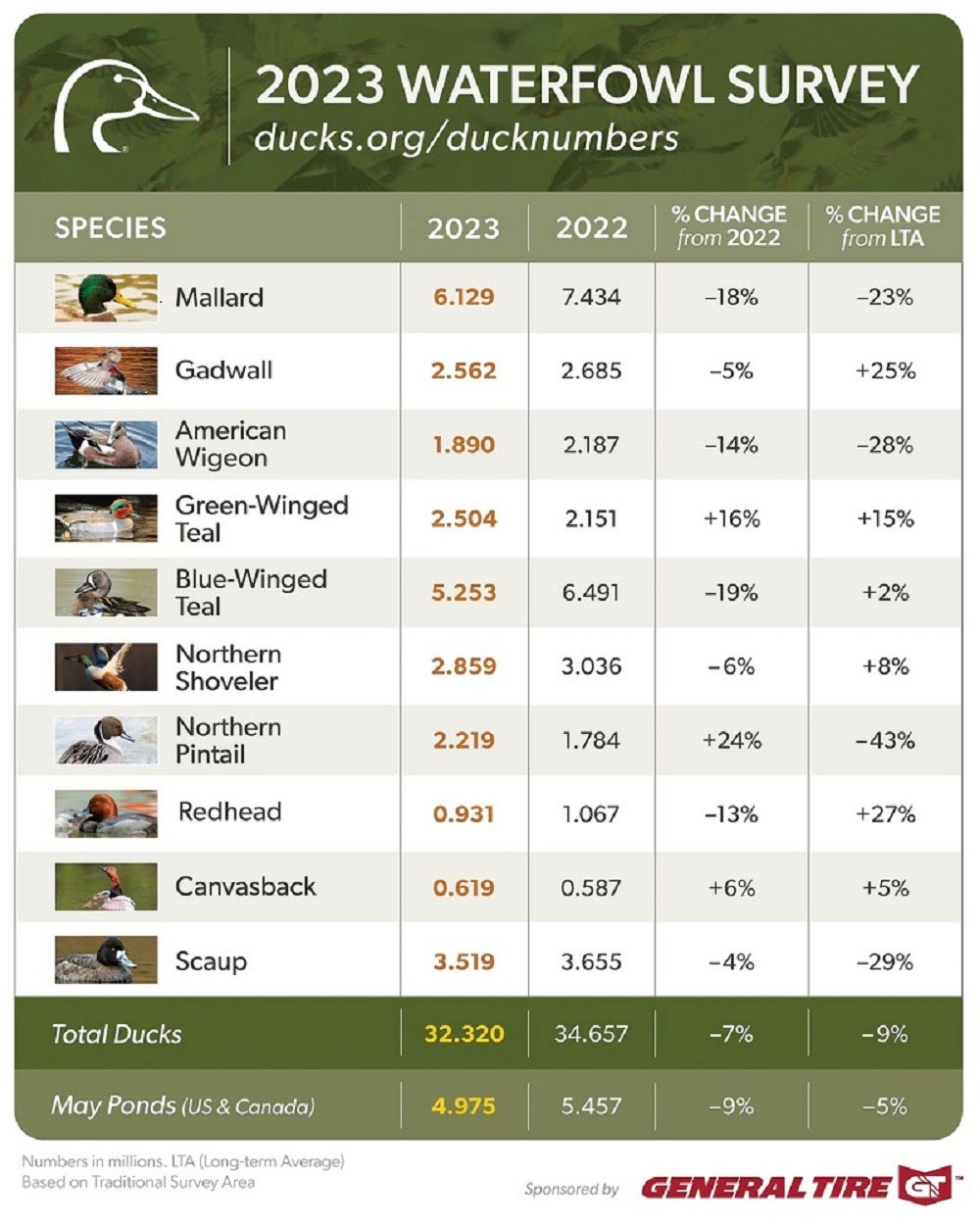
The U.S. Fish and Wildlife Service (FWS) released its report on 2023 Waterfowl Population Status based on surveys conducted in May and early June by FWS, Canadian Wildlife Service and other partners.
Total populations were estimated at 32.3 million breeding ducks in the traditional survey area, a 7% drop from 2022’s estimate of 34.7 million and 9% below the long-term average (since 1955).
DU Chief Scientist Dr. Steve Adair said the overall numbers reflect a complex relationship between waterfowl, weather and habitat availability.
“These results are somewhat disappointing, as we had hoped for better production from the eastern prairies following improved moisture conditions in spring of 2022,” Adair said. “Last year’s nesting season was delayed with April snowstorms and May rains which likely impacted overall production. In the past, we have seen population growth lag moisture conditions as small, shallow wetlands recover from the lingering impacts of severe drought.”
Key takeaways
- Populations of most species remain healthy and near the long-term averages, which should produce a respectable flight for waterfowl hunters and waterfowl enthusiasts to enjoy this fall and winter.
- Total pond numbers in the U.S. and Canada were estimated at 5 million, which was 9% lower than the 2022 estimate of 5.5 million and slightly below the long-term average of 5.2 million.
- Mallard and American wigeon populations declined. Estimates for mallards were down 18% from 2022 and 23% from their long-term average. American wigeon were down 14% from 2022 and 28% from their long-term average. These declines are a concern for DU scientists and amplify the need for sustained investments in conservation, monitoring and targeted science.
- Pintails provided a noteworthy bright spot. Population estimates increased 24% over the record low from last year. Although the survey showed that overall duck populations remain healthy, it also told a story of continuing drought in the western Canadian prairie provinces, which will limit production for ducks that traditionally settle in those landscapes.
- Subsequent surveys will paint a more complete picture of how well duck populations are recovering from the severe drought of 2020 –2021.
- Highly pathogenic avian influenza – Based on reports from waterfowl managers and wildlife disease experts of partner agencies, DU scientists don’t expect a significant impact on duck populations from the HPAI outbreak of 2022.
View the full bird population report here.
